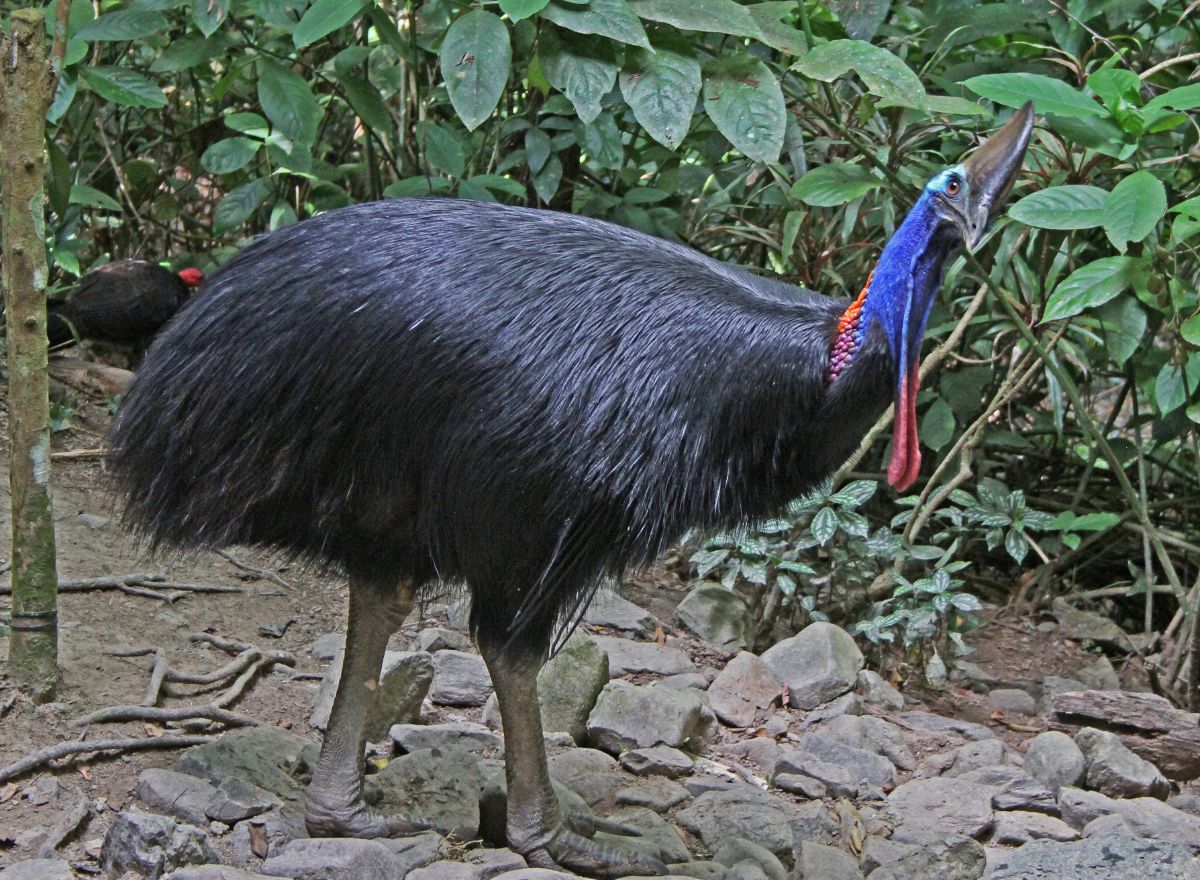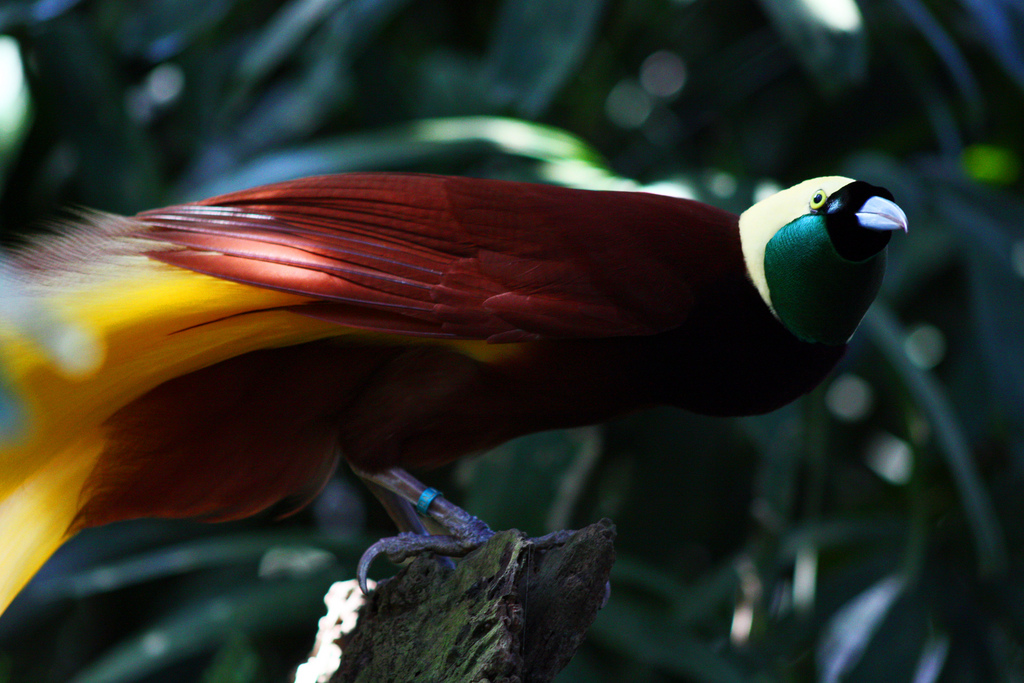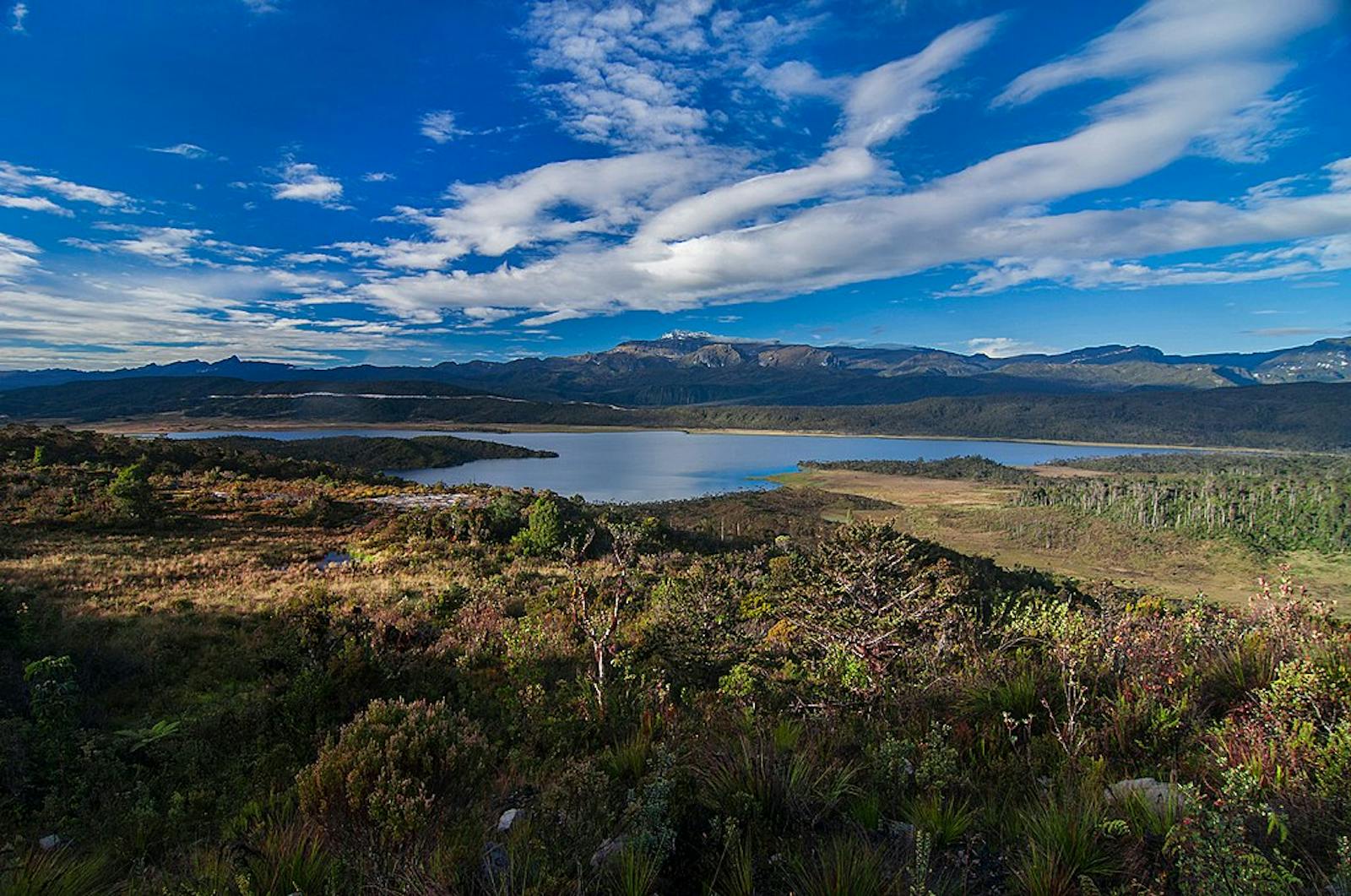Southern New Guinea Lowland Rainforests
The ecoregion’s land area is provided in units of 1,000 hectares. The conservation target is the Global Safety Net (GSN1) area for the given ecoregion. The protection level indicates the percentage of the GSN goal that is currently protected on a scale of 0-10. N/A means data is not available at this time.
Bioregion: New Guinea & Surrounding Islands (AU13)
Realm: Australasia
Ecoregion Size (1000 ha):
12,314
Ecoregion ID:
155
Conservation Target:
91%
Protection Level:
1
States: Papua New Guinea, Indonesia
The vast lowland plains of Southern New Guinea support diverse tropical forests roamed by crowned pigeons, southern cassowary, and tree kangaroos. Huge palm cockatoos and bird-of-paradise are two of the many spectacular residents. These are among the largest remaining forested landscapes in Australasia and one of the richest areas for vascular plants in Indo-Malaysia.

The flagship species of the Southern New Guinea Lowland Rainforests ecoregion is the southern cassowary. Image credit: Wikipedia, Joseph C. Boone (CC by 4.0)
The Southern New Guinea Lowland Rain Forests ecoregion stretches across the lowland forests south of the Central Cordillera of Indonesian Irian Jaya and Papua New Guinea. The climate of the ecoregion is tropical wet, which is characteristic of this part of Melanesia, located in the western Pacific Ocean north of Australia. Although the remainder of the ecoregion is lower than most parts of New Guinea, the area's low relief and large rivers draining the nearby Central Ranges result in this ecoregion's inundation during the wet season
Lowland forests predominate, though foothill forests, limestone forests, peat swamp forests, and freshwater swamp forests occur under the right conditions. Pometia, Octomeles, Ficus, and Alstonia are some important tree genera. The tall Dipterocarp trees occur, but not in the dominant stands found in Southeast Asia. Dense stands of Araucaria, the tallest tropical trees in the world, are present in scattered locations.

Greater bird of paradise. Image credit: Wikipedia, Andrea Lawardi (CC by 2.0)
The mammalian fauna consists of a wide variety of tropical Australasian marsupials, including a tree kangaroo. The ecoregion contains sixty-nine mammal species, thirteen of which are endemic or near-endemic. Bulmer's fruit bat and the large pogonomelomys are critically endangered, whereas the lesser tube-nosed bat, New Guinea sheathtail-bat, Fly River horseshoe-bat, and Papuan mastiff bat are considered vulnerable. There are 344 bird species in the ecoregion, including five endemic and near-endemic species. The red-billed brush-turkey, greater bird-of-paradise, and Little paradise-kingfisher are largely restricted to this ecoregion. The ecoregion intersects two separate Endemic Bird Areas, the South Papuan lowlands and the Trans Fly. Plant diversity is high for the region, but little has been explored to date.
The Papuan Plateau and the Purari River Basin are major wilderness areas in this ecoregion. Much of the habitat remains in large, contiguous blocks. However, large areas near the western town of Timika and the central town of Asike have been cleared for palm oil plantations. Palm oil plantations are exploding in New Guinea and have the potential to destroy large swaths of this ecoregion over the coming decades. In the eastern region and much of the central coastal forests north of the Digul River, large areas have been cleared for traditional agriculture. Logging is ongoing in the eastern region, particularly north of Kikori.
Lorentz National Park (5,300 square kilometers) protects a large section of this ecoregion along an altitudinal gradient from the coast to the highlands. A few other smaller protected areas occur, such as the Bupul Nature Reserve and Danau Bian Wildlife Reserve, but these are quite small, and much of the ecoregion remains unprotected against the juggernaut of palm oil expansion.
Priority conservation actions for the next decade
- Protect larger blocks of rainforest habitats from palm oil expansion.
- Maintain water flows within natural regimes.
- Engage indigenous community members for protected areas and resource management planning.
-
-
- Adams VM, VI Tulloch, HP Possingham. 2017. Land-sea conservation assessment for Papua New Guinea. A report on the work undertaken to fulfil the terms of the project Review and Integration of the Terrestrial and Marine Program of Works on Protected Areas. PNG CEPA, University of Queensland, Global Environment Facility, UNDP, Brisbane. 75 pp.
- Beehler BM, TK Pratt. 2016. Birds of New Guinea Distribution, Taxonomy, and Systematics. Princeton University Press, Princeton.
- Davis SD, VH Heywood, AC Hamilton (eds). 1994-1997. Centres of plant diversity: a guide and strategy for their conservation. World Wide Fund for Nature (WWF) and ICUN - World Conservation Union, Cambridge.
-
Cite this page: Southern New Guinea Lowland Rainforests. Ecoregion Snapshots: Descriptive Abstracts of the Terrestrial Ecoregions of the World, 2021. Developed by One Earth and RESOLVE. https://www.oneearth.org/ecoregions/southern-new-guinea-lowland-rainforests/
-



